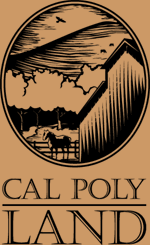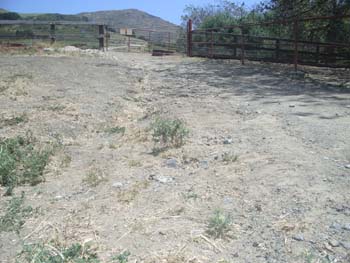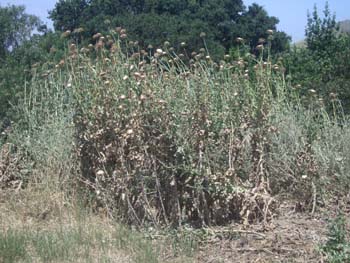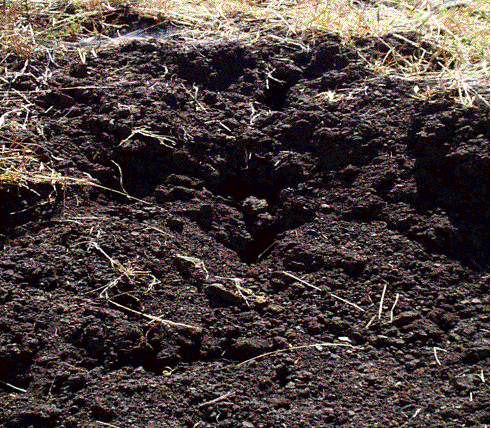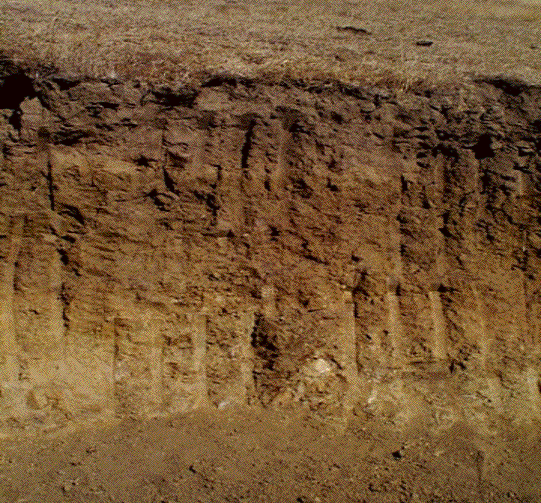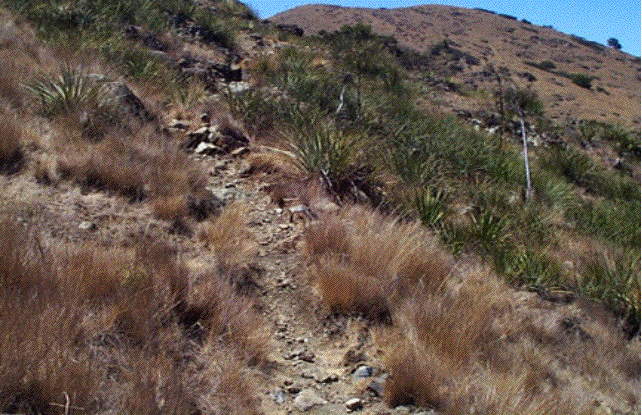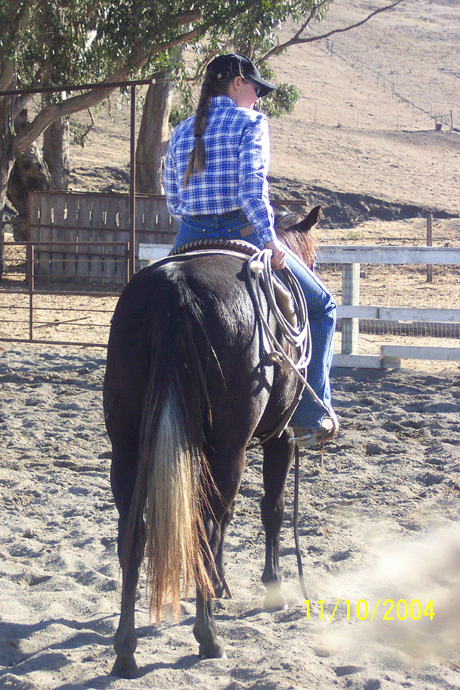|
Soils
|
|

|
|
|
Most horse farms and ranches are apt to have a vast negative impact on the environment, and Cal Poly’s Equine Center is no exception. According to many visual indications, the land is not in state of the art condition. Bare soils, invasive species, and stream channels are all signs of negative impact. The protection of the soil surface is non existent in some areas of the Equine Center. Vegetative cover normally protects and stabilizes soil. Without it, the land is in poor shape. For instance, in Colt Class pasture soil has eroded down to the bedrock in some places. These areas especially are exposed to rainfall and runoff forces that erode the land. Studies have shown that the soil of this pasture is subject to substantial particle detachment resulting in a predicted loss of 20 tons per acre per year.
In other highly impacted areas, rills and potential
gullies have started to form. Purple starthistle, which is an
invasive species, thrives in many places. These are unhealthy
reactions to overgrazing and soil compaction.
Protection of the soil surface at the Equine Center is called for. According to Kaila Dettman, who wrote An Erosion Control and Forage Production Plan for the Cal Poly Equine Center, the water that leaves the Center should be safeguarded in order to maintain aquatic and environmental values. She also adds that the health and vigor of riparian areas should be restored and expanded and the quantity of forage in pastures should be as well. Her conclusion is that by reducing and preventing accelerated erosion, our equine land should be improved. Why is it such a challenge specifically for horse facility landowners to take care of their land? The challenge is a result of many things. Risks of animals getting cut and bruised and the mixing of herds with individual horses who do not get along are only a few problems in regards to grazing practices. In addition, in order for horses to be ridden every day and kept under observation, they need to be close to facilities. Horses are also more selective grazers than cattle or sheep and they will defecate in the same area of a pasture. These problems all limit healthy grazing practices and create degradation of the land from overgrazing. Overgrazing is not the only aspect which contributes to the problems of the land. Horse facilities are usually close to urban areas where less vegetation is available to separate sediment from waste. As a result, contaminants are deposited into water sources. The horse industry is much farther behind in prioritizing the
environment when managing their land compared to other livestock
companies. This is because most horses are raised on private lands
and do not create the public scrutiny that other livestock producers
face who graze public lands. However, people have started to recognize
these impacts and are trying to change the ways they run their
land. Erosion control plans and forage production assessment plans
can help farms and ranches meet specific objectives. Our Equine
Center should be just as environmentally friendly a place as the
rest of Cal Poly. There are 4 types of soils that lay within the boundaries of the Equine Center. Together they form 6 different soil series. Diablo and Cibo Clays
These soils are found along the steep slopes, hillsides,
and mountains of the Equine Center. They are deep, well drained,
and house annual grasses and forbs, along with hardwoods in the
wetter areas. Through a shrinking and swelling process, the Diablo
soil inverts itself. The repeated cycles create a churning effect
in the soil, resulting in the mixture of its layers. Because of
the high clay content, the soil has potential for slippage and
compaction. It creates special challenges for those who wish to
build on it. Though it is adequate for grazing land, it is sensitive
to overgrazing. The infestation of plants like Milkthistle, Mustard,
and Cheeseweed will indicate overgrazing. In addition, the rapid
surface runoff creates an erosion hazard. The land capability
class of Diablo and cibo clays is VI. Lodo Clay Loam
Los Osos Loam
Upland, the Los Osos soil can be found on foothill and mountain ridgetops. The water capacity is moderate and therefore the hazard of water erosion is less than the other soils, making it the best choice for grazing. Even so, it is still sensitive to overgrazing and gully development. A, B, and C horizons are distinct, the middle horizon containing high shrink-swell clays. Hence, the soil is subject to mass movement down slope when completely saturated with water. It has been advised to graze only when the soil is dry to help maintain an adequate structure. The land capability class of Los Osos loam soil is III.
Obispo-Rock Outcrop Complex
Among the hills of the Equine Center are a serpentinite rock outcrop complex. It is mostly found on the steepest mountain ridges and side slopes. Erosion hazard is the highest of all the soils being that the water holding capacity is so low. The soil hinders livestock movement and improper nutrient imbalances prevent production of desirable vegetation. This makes the rock outcrop complex the least fit for rangeland. The land capability class of Obispo-Rock Outcrop is VII.
Back to Home Site Description * Facilities * Student Use * Enterprises
*Information provided by Kaila Adrianne Dettman in a thesis presented to the Faculty of California Polytechnic State University. Call# LD729.6.552 A2 D48 ©May 2003 *Pictures provided by Professor Del Dingus |
